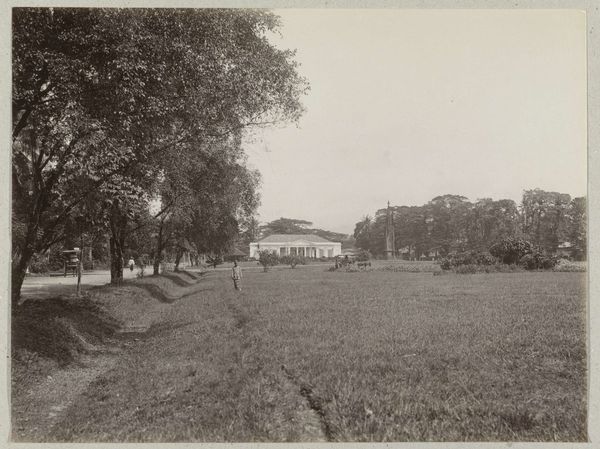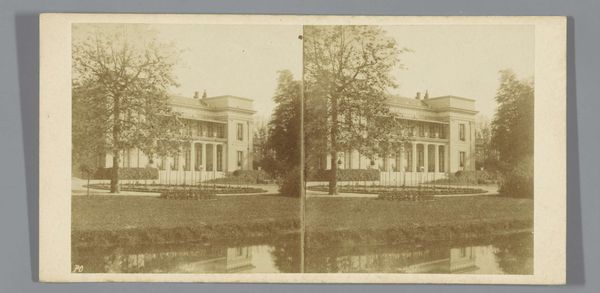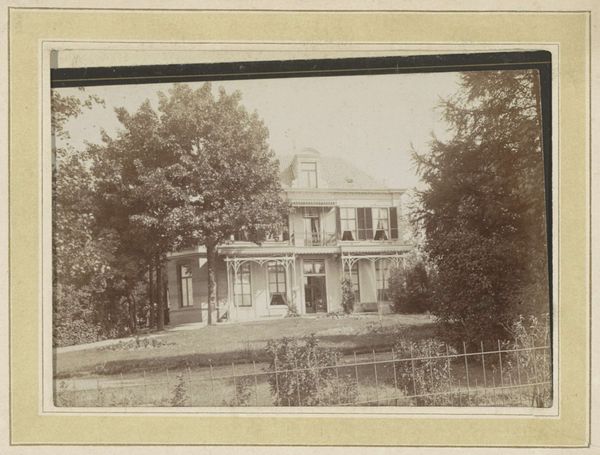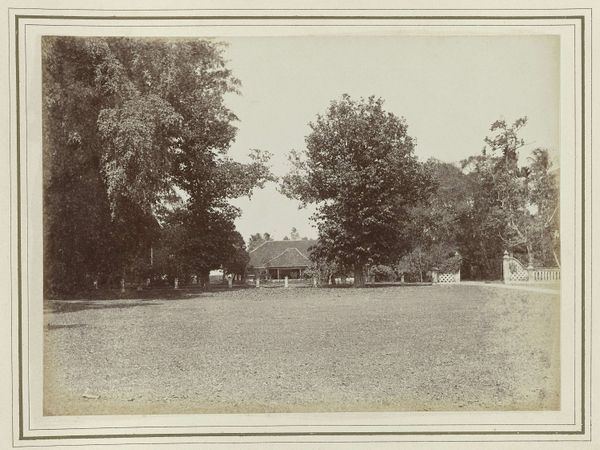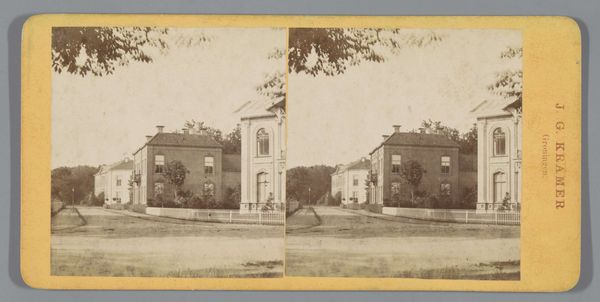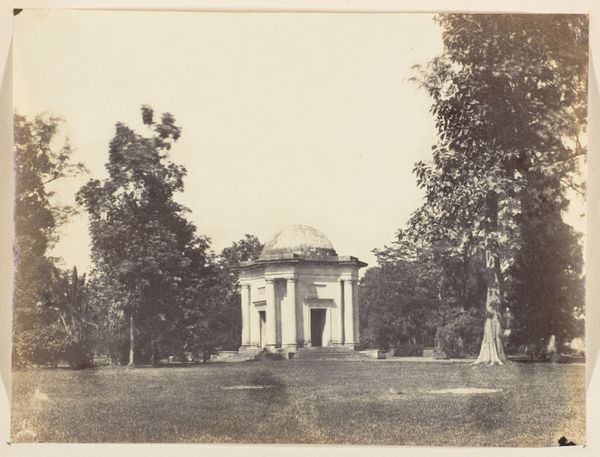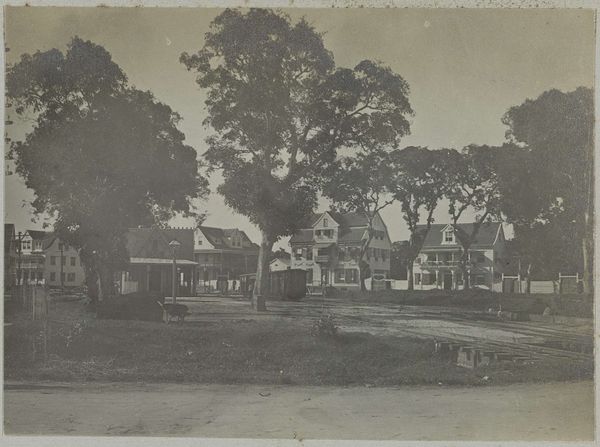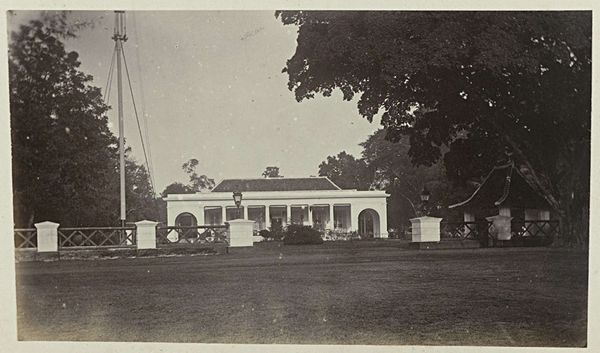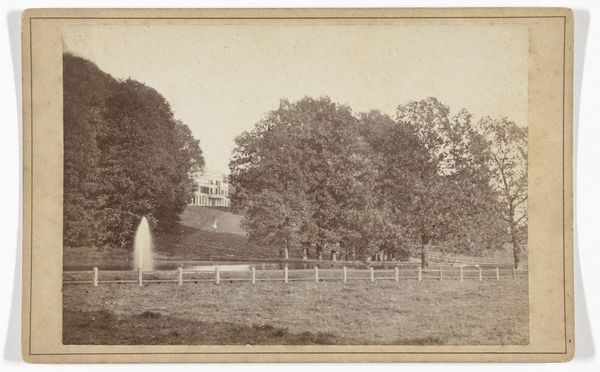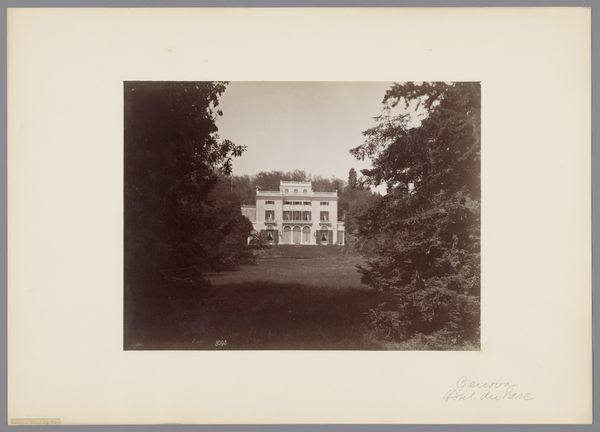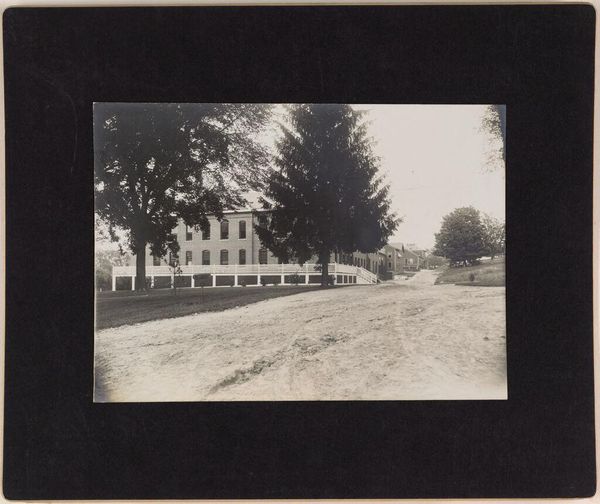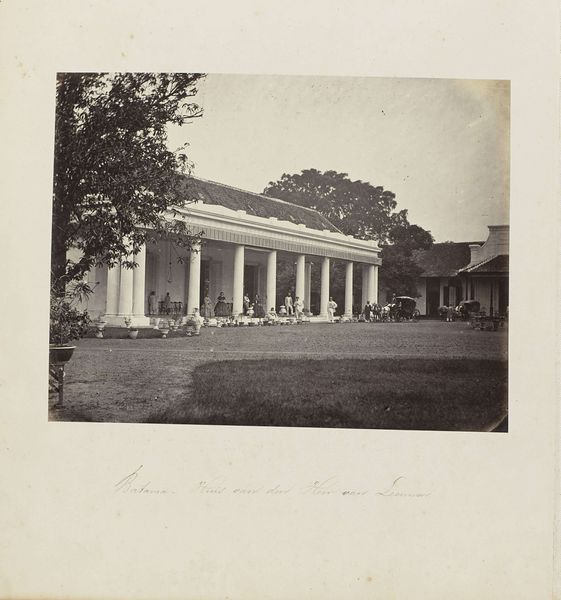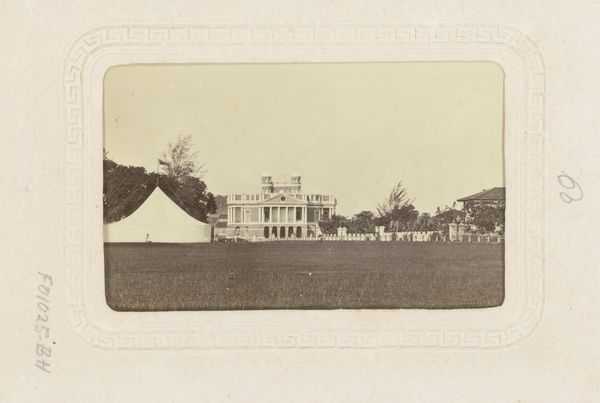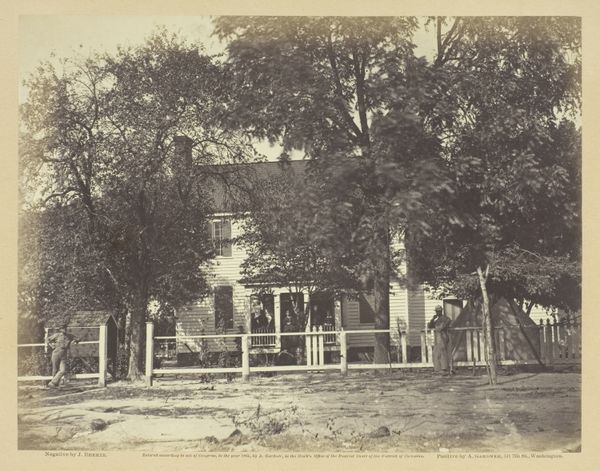
photography
#
faded colour hue
#
photo of handprinted image
#
monotone colours
#
muted colour palette
#
pictorialism
#
organic shape
#
light coloured
#
landscape
#
natural light
#
muted light
#
photography
#
soft colour palette
#
monochrome
#
shadow overcast
Dimensions: height 73 mm, width 98 mm, height 198 mm, width 263 mm
Copyright: Rijks Museum: Open Domain
Editor: So, this is "Gezicht op landgoed De Pauw in Wassenaar," a photograph taken around 1920 by Geldolph Adriaan Kessler, here at the Rijksmuseum. It has a dreamy, almost melancholic quality. What strikes me is the composition, how the building is framed by the trees... How do you interpret this work? Curator: The monochrome palette and soft focus immediately evoke a sense of nostalgia, a yearning for a bygone era. Consider the cultural weight of the stately home, a potent symbol of stability and privilege against the backdrop of a world recovering from the First World War. Doesn't the overcast sky contribute to this feeling, a muted light suggesting a shadow over that privilege? Editor: Yes, it does. It feels almost… wistful. But what about the specific choice to present it as a photograph rather than a painting? Curator: The use of photography, especially in the Pictorialist style, grants the image a claim to realism while simultaneously imbuing it with an artistic vision. Think of the emotional truth captured here. Kessler isn't just showing us a house; he is evoking a mood, hinting at stories lived and lost within those walls, resonating in cultural memory. What emotions does the framing evoke in you, focusing as it does on the border between cultivated and natural landscapes? Editor: It emphasizes a separation. A cultivated perfection set apart, maybe even isolated. The building itself becomes a symbol… Curator: Exactly. The stately home isn’t just architecture; it represents a social structure, a specific way of life teetering perhaps on the edge of change. And the eye is directed there... But also gently invited to step through, enter the memory, and inhabit that space. Editor: That makes a lot of sense. I initially saw the photograph as simply a landscape, but it carries so much more meaning than I initially grasped. Curator: And that’s the beauty of engaging with art – allowing the symbols and imagery to resonate and reveal the cultural memory embedded within them. It becomes more than just a pretty picture. It's a portal to understanding ourselves.
Comments
No comments
Be the first to comment and join the conversation on the ultimate creative platform.
